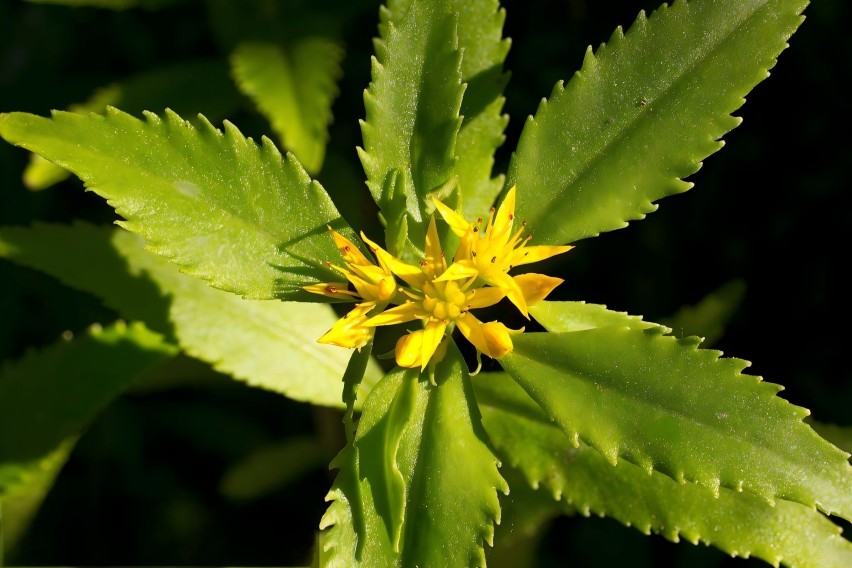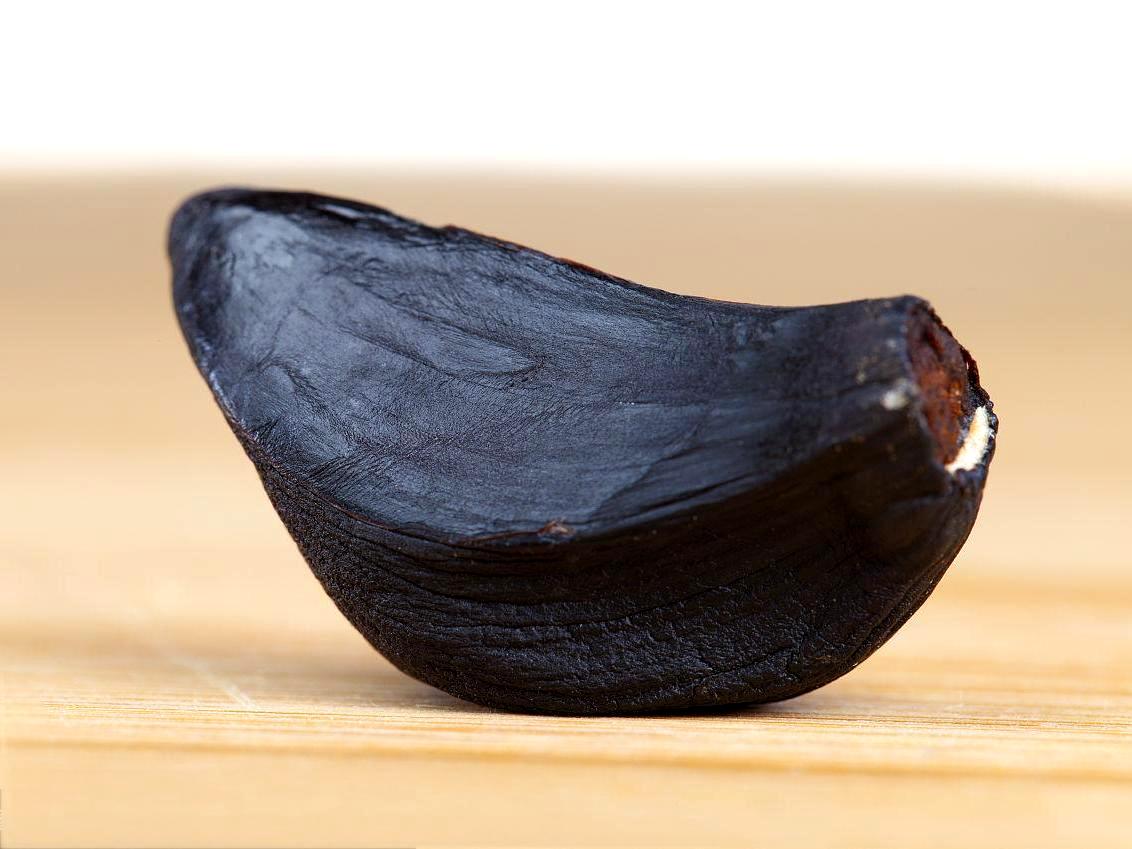What Is the Use of Black Garlic?
Black garlic is made from fresh raw garlic, with the skin left on, and fermented in a fermentation chamber for 90 to 120 days. It was first produced in Aomori Prefecture, Japan, and was introduced to China about 10 years ago, where it gradually became popular. There are many different types of black garlic, and it quickly captured the market. Black garlic is soft and shiny, with a soft texture and a sweet and sour taste that is not irritating. It not only removes the unpleasant flavor and irritation of garlic, but also adds a rich aroma that enhances the appetite. The chemical composition of black garlic also undergoes significant changes compared to that of regular garlic, producing pharmacological effects that garlic does not have[1]. This article provides a review of the chemical composition, pharmacological effects, processing technology, and related product categories of black garlic, as well as an outlook on the future development and application of black garlic.
1 Chemical composition of black garlic
1.1 Melanoidins
Black garlic melanoidins are a type of tan substance formed by the Maillard reaction of sugars and proteins, peptides, amino acids, etc. in garlic. They have similar specific surface areas, similar structures, and varying degrees of polymerization, and are one of the reasons why black garlic is black. Studies have shown that black garlic black essence mainly includes furans, pyrroles, thiophenes, phenols and alkanes, of which the furans have the highest content (more than 45%). Among the furans, 3-methylfuran, 2,5-dimethylfuran and 5-hydroxymethylfurfural have the highest content, which are mainly converted from reducing sugars in garlic[2]. Melanoidins have a very complex structure. The structural identification of melanoidins in black garlic shows that they have a backbone similar to sugar chains, and a relatively high proportion of sulfur, indirectly proving the possibility of participation of the amino acid S-methylmercaptopropionate in the Maillard reaction [3].
Melanoidins not only change the color and flavor of food, but also have antioxidant, prebiotic, and antihypertensive effects. Zhao Yimeng et al. [4] used high hydrostatic pressure to assist in the extraction of melanoidins from black garlic. The study showed that melanoidins are less stable under conditions such as the presence of an oxidant, ultraviolet light, and sunlight. Wang Yueli [5] showed that black garlic black essence extracted with ethanol and purified by ultrafiltration and gel permeation chromatography can effectively scavenge 1,1-diphenyl-2-trinitrophenylhydrazine free radicals and hydroxyl radicals. The relative molecular mass is directly proportional to the antioxidant capacity. Some studies have shown that the antioxidant capacity of black essence with decolorization treatment decreases significantly, which indirectly confirms the antioxidant effect of black essence pigments [6]. In addition, black garlic black essence can inhibit obesity by regulating the circadian rhythm of the intestinal flora in obese mice induced by a high-fat diet [7], and has broad application prospects in fat-reducing foods. However, the preparation process of black essence from black garlic is still immature, and there has been little research on its pharmacological effects and mechanisms. Research on its structure and production reactions is difficult.
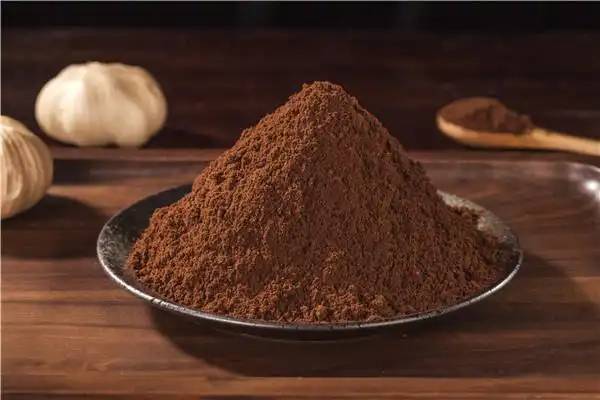
1.2 Proteins and amino acids
During the fermentation process, nitrogen-containing compounds in garlic are converted into proteins, and proteins are partially broken down into amino acids. Black garlic is rich in 18 amino acids, including lysine, valine, and tryptophan, as well as eight essential amino acids for the human body [8]. Zheng Lan et al. [9] determined the amino acids by acid hydrolysis, and the results showed that most of the hydrolyzed amino acids increased significantly during processing, with the largest increases in alanine and leucine, while the contents of cysteine and arginine decreased significantly. Cysteine is the parent of black garlic flavor compounds and is also the main precursor of garlic sulfur compounds. The decrease in its content may be one of the reasons for the formation of black garlic flavor. Wang Congcong et al. [10] used the ninhydrin colorimetric method to study the changes in the content of total free amino acids during the processing of black garlic, and the results showed an initial increase and then a decrease. Yang Qingli et al. [11] also found that the content of most amino acids was inversely proportional to the processing time.
The results of studies on the changes in amino acid content after black garlic processing are not the same, and the results of protein-related studies also vary greatly. For different varieties of black garlic, the protein content of single-clove black garlic increased significantly before and after fermentation, while there was no significant change in multi-clove black garlic [12]. Niu Nana et al. [13] observed that the soluble protein content of black garlic continued to increase during processing. Zhang Zhenghai et al. [14] showed that the overall increase in crude protein was significant, while Sun Yue'e et al. [15] found that the protein content gradually decreased during the later stages of processing. This may be related to the variety of black garlic, processing method, sample size, etc. It is speculated that the decrease in amino acid and protein content may be the result of consumption by the Maillard reaction. Amino acids and proteins are important nutrients in black garlic. Based on the current work, optimizing the black garlic variety and processing technology will help in the development and application of black garlic products.
1.3 Polyphenols
Polyphenols are a general term for compounds in plant foods that have potential health-promoting effects. They generally have strong antioxidant effects and are commonly used as antioxidants and sunscreens. Garlic is one of the most important sources of polyphenols. After processing into black garlic, the polyphenol content can increase several times, which may be related to the hydrolysis of macromolecular substances to release a large number of phenolic hydroxyl groups and the conversion of other substances at high temperatures. The antioxidant capacity is directly proportional to its content [16].
The main components of black garlic polyphenols are flavonoids, phenolic acids and tannins. Current research focuses mainly on the extraction process and its antioxidant effect. Wu Ting et al. [17] prepared black garlic polyphenols using a microwave-assisted extraction method. Ethanol was used as the extraction solvent, with an extraction time of 12 min, the yield was only 8.66 mg/g; Huang Jiajia et al. [18] and Song Xiaohong et al. [19] used an extraction time of 40 min and 30 s, with yields of (6.15±0.50) mg/g and 1.885 mg/g, respectively; Zheng Qing et al. [20] used 60 % acetone instead, with an extraction time of 96 min, yield increased to 13.31 mg/g. Wang Zhao et al. [21] used a warm soaking method, using acidified ethanol as the extraction solvent based on the characteristics of phenolic hydroxyl groups. The extraction rate was 23.0037 mg/g for 60 min, and 20.4045 mg/g for the unacidified group, proving that acidification is beneficial to improving the extraction rate of black garlic polyphenols and enhancing its antioxidant capacity. In addition, Yu Zhongming et al. [22] used a composite enzyme method to extract black garlic polyphenols, and the extraction yield at 60 min was 8.087 mg/g. In summary, microwave-assisted extraction may not be suitable for the extraction of black garlic polyphenols. The extraction solvent and time have a significant effect on the extraction yield of black garlic polyphenols, and the advantage of the warm soaking method for extracting black garlic polyphenols is obvious.
1.4 Sulfur-containing compounds
Sulfur-containing compounds are the most active substances in garlic. After processing into black garlic, the total amount remains basically unchanged, and is about four times that of high-organic-sulfur-containing vegetables such as onions and cabbages. Black garlic contains 27 sulfur-containing compounds, of which the contents of alanine, deoxyglycine, and γ-glutamylcysteine are relatively high. Currently, the commonly used extraction methods include the fixed sulfur method, thin layer chromatography scanning method, high performance liquid chromatography-tandem mass spectrometry method and high performance liquid chromatography (HPLC) method. Among them, HPLC is currently the most widely used, efficient and economical method. Lu Lian-deng et al. [23] used HPLC to simultaneously determine the contents of alanine, deoxynojirimycin and γ-glutamylcysteine for the first time. The results showed that there were certain differences in the contents of the three sulfides in the seven commercially available black garlics.
Allyl sulfide is a non-protein sulfide amino acid unique to garlic, and has been developed into preparations such as oral solutions, pellets, and injections. Allyl sulfide has no bactericidal activity, but can bind to certain bacteria or bacterial enzyme proteins to block the exchange of substances between the bacteria and the outside world, and is partially converted to allicin during the process, enhancing the bacteriostatic effect [8]. Allyl sulfide can reduce reactive oxygen species (ROS) and mitochondrial membrane potential, inhibit the proliferation of gastric adenocarcinoma cells; and increase the activity of human salivary aldehyde dehydrogenase, which to some extent reduces the incidence of oral cancer; multiple studies have found that it can slow tumor progression by inhibiting or directly killing, and it is worth further research [24]. In addition, allicin also has anti-inflammatory, antioxidant, and immune-modulating functions. Other sulfides, such as S-allylmercaptocysteine (SAMC), have a good inhibitory effect on tumors; allyl sulfide has neuroprotective and antioxidant effects; and allicin can improve memory [25].
1.5 Sugars
One reason why black garlic is softer and sweeter than regular garlic is the increased content of water-soluble sugars. Black garlic can contain up to 60% water-soluble sugars, dozens of times more than regular garlic. The main types of sugars in black garlic are rhamnose, fructose, glucose, sucrose and maltose, with fructose being the most abundant and sucrose the least abundant [3].
Current research on the sugars in black garlic focuses on the polysaccharides. Studies have shown that black garlic polysaccharides can effectively scavenge free radicals, inhibit the increase in ROS caused by inflammation, and have significantly higher antioxidant activity than garlic polysaccharides but slightly lower than vitamin C. Black garlic polysaccharides can also inhibit energy metabolic disorders caused by free radicals and effectively resist fatigue [26]. Black garlic polysaccharide extract can significantly reduce the blood glucose concentration of mice with hyperglycemia without obvious toxic side effects [27]. In addition, black garlic polysaccharides can inhibit X-ray-induced genetic material changes in mice, and have a certain radiation protection effect [28]. Some studies have shown that garlic polysaccharides have obvious laxative, immunomodulatory, antiviral and other effects, which can be used as a reference for studying the pharmacological activities of black garlic polysaccharides.
2 Pharmacological effects of black garlic
2.1 Antioxidant
The antioxidant activity of black garlic is the pharmacological effect that has been studied the most and in the greatest depth in recent years. In terms of liver protection, studies have shown that aged black garlic extract can significantly increase the content of glutathione and the activity of antioxidant enzymes in the liver, and significantly reduce the oxidative damage caused by long-term alcohol consumption to the DNA of blood lymphocytes [29]. A black garlic powder solution can increase the activities of superoxide dismutase (SOD), glutathione peroxidase and catalase in the livers of diabetic mice, and reduce the content of lipid peroxide malondialdehyde in the liver. It can also protect the liver and kidney cells of diabetic rats by restoring the levels of urea, creatinine, β2-microglobulin and total protein[30]. protect the liver and kidney cells of diabetic rats [30]. Tsai et al. [31] showed that the main components of the liver-protecting effect of black garlic may be S-allylcysteine (SAC) and black garlic polysaccharides, which inhibit CCl4-induced liver damage by inhibiting lipid peroxidation.
In terms of cardiovascular and cerebrovascular health, black garlic can reduce the risk of cardiovascular disease by inhibiting H2O2-induced endothelial cell damage [32]; 40% ethanol extract pretreatment of 2,2-azobis(2-methylpropionamidine) dihydrochloride-induced damage to red blood cells significantly reduced the hemolysis rate, showing strong intracellular antioxidant activity [33]. Black garlic can also increase the body's antioxidant levels, reduce the N-terminal brain natriuretic peptide precursor content in patients with coronary heart disease and chronic heart failure, and improve left ventricular ejection fraction [34]; Valls et al. [35] found in a clinical trial of patients with hypercholesterolemia that after taking black garlic extract for 6 weeks, the subjects' diastolic blood pressure was generally effectively reduced. In addition, black garlic ethanol extract has a preventive effect on working memory impairment caused by sodium glutamate [36]; allicin in black garlic extract can scavenge free radicals, improve the body's antioxidant capacity, and improve the learning and memory abilities of Alzheimer's disease model mice [37]; other studies have shown that black garlic nanomilks have a better effect on improving learning and memory in rats than black garlic extract [38].
The antioxidant mechanism of black garlic is currently unclear. Some studies have suggested that it is related to the upregulation of antioxidant enzymes that is dependent on the nuclear factor E2-related factor 2 (Nrf2) signaling pathway. Studies have shown that dithiobisallyl disulfide can induce an increase in Nrf2 protein levels, which in turn activates antioxidant enzymes [39]. Another study showed that black garlic may be able to block the oxidative stress induced by tert-butyl hydroperoxide in rat hepatocytes, which may be related to the regulation of the c-Jun amino-terminal kinase signaling pathway [40].
2.2 Antibacterial and anti-inflammatory
Most of the sulphur compounds in black garlic have a significant antibacterial effect. It has been reported that the antibacterial effect mainly depends on allicin, which can kill more than 90% of saliva bacteria, especially methicillin-resistant Staphylococcus aureus [41]. Several studies have shown that black garlic combined with antibacterial drugs can effectively reduce the expression of virulence genes and reduce drug resistance. Nano-scale iron sulfide, which is converted from the sulfur compounds in black garlic, has been shown to have a broad-spectrum and potent bactericidal effect [42].
The main compounds in black garlic that exhibit anti-inflammatory effects are acetone, 2-linoleoyl-rac-glycerol and 5-hydroxymethyl furfural (5-HMF). 5-HMF is a product of black garlic processing, which exerts an anti-inflammatory effect on human umbilical vein endothelial cells stimulated with tumor necrosis factor-α by inhibiting the expression of vascular cell adhesion molecule 1, ROS and nuclear factor κB (NF-κB) activation [43]. In mouse monocytic leukemia cells, 5-HMF inhibits the production of prostaglandin E2 and pro-inflammatory cytokines (TNF-α, IL-1β and IL-6) production, inducible nitric oxide synthase (iNOS) and cyclooxygenase-2 (COX-2) expression, and NF-κB p65 nuclear translocation, as well as anti-inflammatory effects on the protein kinase B/mammalian target of rapamycin (Akt/mTOR) pathway in mouse monocytic macrophage leukemia cells [44]. Cui Xiaoyu et al. [45] used black garlic extract to intervene in a BALB/c mouse model of ulcerative colitis and similarly found that the concentrations of cytokines such as TNF-α, IL-1β and IL-6 were significantly reduced. At the same time, black garlic extract can reduce lung inflammation caused by sepsis by downregulating iNOS and COX-2. Male Wistar rats treated with black garlic extract for 20 consecutive days to treat gastric ulcers showed significantly lower levels of prostaglandin E2, glutathione and NO in the stomach [46]. Therefore, the anti-inflammatory mechanism of black garlic may be related to the direct inhibition of inflammatory-related transcription factors.
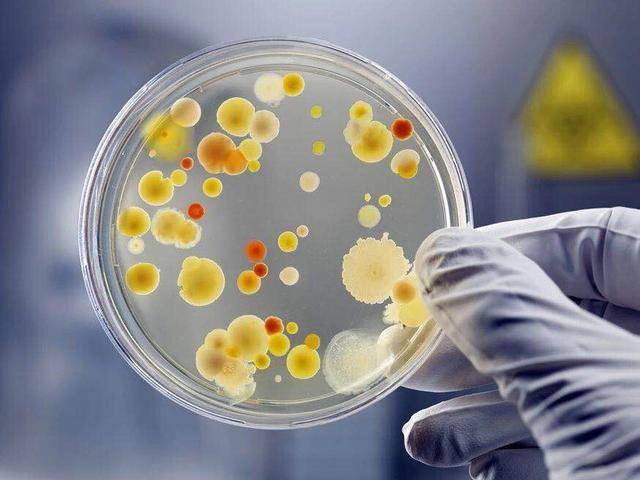
2.3 Antitumor
Black garlic has a certain anti-tumor effect, and related research is still in its infancy. Shin et al. [47] showed that black garlic extract inhibited the growth of HT29 colon cancer cells by upregulating phosphodiesterase and tensin homolog genes, downregulating the expression of Akt and phosphorylated protein kinase B, and inhibiting the activity of their downstream target 70 kDa ribosomal protein S6 kinase 1 at the mRNA and protein levels. Duruishuo et al. [48] found that black garlic can significantly inhibit the proliferation of human liver cancer cells, induce apoptosis and have a cycle arrest effect, which may be related to the upregulation of Bcl-2-associated X protein, caspase-3, and downregulation of B-cell lymphoma/leukemia-2 protein. Black garlic extract can also inhibit the levels of matrix metalloproteinase-2, matrix metalloproteinase-9 and tight junction protein, thereby inhibiting the metastasis and invasion of gastric tumor cells [49]. Similar inhibitory properties have also been reported for black garlic extract and its compound SAMC in Lewis lung cancer cells and thyroid cancer cell lines, respectively. The anti-cancer effects of SAMC have also been confirmed in prostate cancer, liver cancer, bladder cancer and ovarian cancer [50]. Black garlic polysaccharides also have a certain immunomodulatory effect and have certain potential in adjuvant cancer treatment.
2.4 Lowering blood lipids
It has been reported that black garlic, when added to the daily regimen of patients suffering from stroke, heart disease, hypertension, etc., can lower blood lipids and cholesterol to a certain extent, and can be used as a daily health food. Yao Lu et al. [51] studied the lipid-lowering effect of black garlic and black ginseng in combination and found that the blood lipid indicators of male rats fed a high-fat diet were significantly reduced, and the ginseng-garlic mixture has the potential to develop drugs for the prevention of hyperlipidemia. Black garlic can also improve the fatty degeneration around the portal triad and reduce fat accumulation in the liver. Research has shown that black garlic extract can inhibit lipogenesis and lipolysis in mature 3T3-L2 adipocytes by reducing the expression and phosphorylation of peroxisome proliferator-activated receptor gamma and the level of phospho-hormone sensitive lipase antibody, and regulates the basal metabolic activity of human adipose stem cells [52]. Park et al. [53] showed that black garlic extract reduced sterol regulatory element binding protein 1c mRNA expression, which in turn led to downregulation of lipid and cholesterol metabolism and a subsequent decrease in total blood lipids, triglycerides and cholesterol levels.
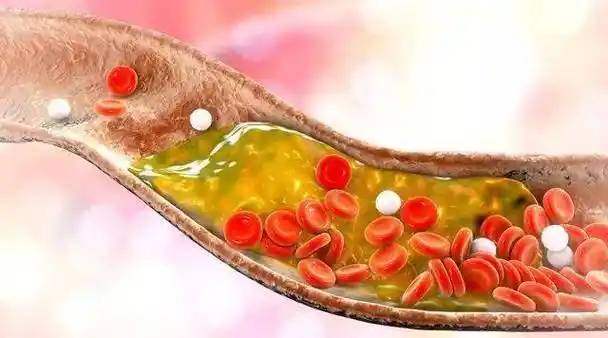
2.5 Other pharmacological effects
Black garlic has been reported to have a certain anti-allergic effect, but it is weaker than that of garlic. Yoo et al. [54] found that black garlic extract can inhibit immunoglobulin E-mediated allergic reactions in rat basophilic leukemia cells and passive skin allergic reactions in vivo. The mechanism of its anti-allergic effect involves the inhibition of tyrosine kinase, cytosolic phospholipase, arachidonate 5-lipoxygenase and COX-2. Black garlic extract can also significantly lower blood glucose and glycosylated hemoglobin, and significantly increase serum insulin. It has a beneficial effect on the biomarkers of glucose metabolism in rats with streptozotocin-induced diabetes.
The mechanism may be to increase the activity of aspartate aminotransferase (AST), alanine aminotransferase (ALT), and γ-glutamyl transferase, thereby lowering blood glucose [55]. In terms of liver protection, it can reduce the activity of alcohol-induced enzymes such as AST aminotransferase and ALT in the liver, inhibit the activity of cytochrome P450 2E2 and its induction of glutathione-s-transferase and quinone reductase activity, and exert a protective effect on chronic induced liver damage in SD rats [56]. Black garlic can regulate gastrointestinal motility, effectively stimulate gastrointestinal peristalsis by increasing serotonin content, enhance gastrointestinal emptying, and promote defecation [57]. Moon et al. [58] found through electrophysiological experiments that black garlic extract depolarizes the pacemaker potential of Cajal interstitial cells and also increases the small intestine propulsion rate of ICR mice. In addition, some studies have suggested that black garlic can be used to protect against nerve damage caused by fluorine poisoning [59].
3 Processing technology
The black garlic processing technology in China was mainly introduced and improved from Japan, and mainly includes non-fermented processing technology and fermented processing technology. Among them, the non-fermented processing technology is more commonly used, and is divided into solid-state processing and liquid processing. Solid-state processing is currently the most important method for processing black garlic, which means that no other auxiliary materials are added, and the garlic is directly cultivated under the corresponding high temperature and high humidity conditions. The cultivation time has a great impact on the quality of black garlic, and the required accumulation of substances can only be achieved after more than 3 months. In order to shorten the processing time and ensure the quality, black garlic is often pre-processed before processing, including low-temperature freezing, high temperature, ultra-high pressure, microwave, and anaerobic respiration inhibition. Among them, low-temperature freezing and microwave can effectively shorten the processing time of black garlic and improve the functional components of black garlic. They are the most simple and efficient pre-processing methods. Zhang Xuehui et al. [60] also found that microwave-pretreated black garlic has higher levels of thiophene and furan substances, i.e., it has a richer charcoal-grilled aroma and fruity sweetness, with an even better flavor.
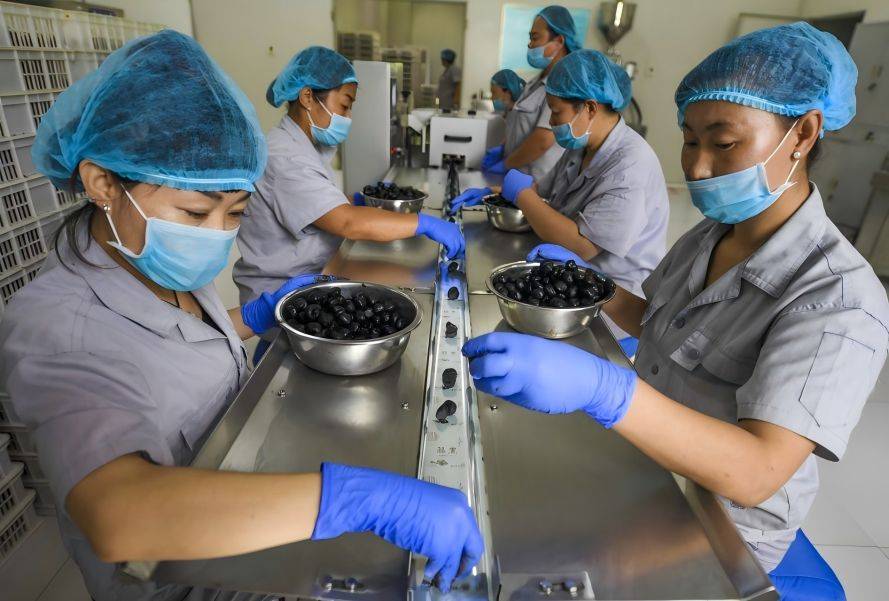
In recent years, research has tended to focus on the possibility of using microbial fermentation technology to increase the content of functional components in black garlic, which is greener and healthier than traditional processing methods. Many researchers believe that black garlic is a fermented product, and that microorganisms play a role in the formation of black garlic. Qiu Zhichang [61] showed through analysis of the endogenous bacterial community and characteristics that dominant endogenous bacteria can participate in the formation of black garlic, mainly by secreting fructan hydrolase to accelerate the Maillard reaction and promote browning of black garlic. It was also found that compared to the processing time, the Maillard reaction regulated by different bacteria has a greater impact on the quality of black garlic. However, further research is needed on how to use microbial fermentation to enhance the pharmacological activity of black garlic, the selection of fermentation strains, the determination and optimisation of fermentation processes, and safety issues.
4 Product categories
4.1 Black garlic liquid preparations
Black garlic is often made into oral liquid. Its unique sweet and sour taste can mask the peculiar smell of other ingredients, making it more acceptable to patients. For example, black garlic can be used to improve the bitterness of Artemisia leaves extract and add flavour. Black garlic can be combined with many traditional Chinese medicines to prevent tumors, fight oxidation, lower blood lipids, and so on. In addition, black garlic can be made into black garlic enzyme oral liquid, black garlic fermented beverage, and paired with tea, Chinese medicinal materials, etc. to make “tea drinks”, and alcoholic products.
4.2 Black garlic powder
Plant-based medicines or foods are often dried and ground to make powders, which have the characteristics of a long shelf life, being easy to digest and absorb, and being convenient to package and carry. Black garlic can be mixed and ground with the corresponding Chinese medicinal materials to make a compound nutritional powder, which can exert the effects of preventing and treating high blood pressure and hyperlipidemia, as well as being antioxidant. It is friendly in price and suitable for all kinds of people. The black garlic residue after allicin extraction can also be fermented and dried into black garlic residue powder. Fermentation increases the content of active ingredients in black garlic residue, which can not only be used as an additive in livestock feed, but also as an ingredient in various foods, making the best use of everything. At the same time, black garlic extract powder is also often used as a food additive to add flavor.
4.3 Black garlic seasonings
Researchers are also working to introduce black garlic into people's daily diets, making healthy seasonings such as black garlic vinegar, black garlic soy sauce, and black garlic hot sauce. Traditional soy sauce is a concentrated source of sodium (NaCl, monosodium glutamate, sodium benzoate), which is not friendly to people with hypertension, coronary heart disease, or diabetes. Black garlic soy sauce can avoid the health risks associated with high sodium content, satisfying consumers' dual needs for deliciousness and health. In addition, black garlic vinegar contains stomach-protecting Chinese herbs, which, when used over the long term, can effectively relieve stomach diseases such as gastritis and gastric ulcers.

4.4 Other products
Black garlic was first developed as a health food, but nowadays people prefer to develop it in a more functional direction. These include black garlic paste, which can moisten the bowels and promote digestion; black garlic jelly, which lowers the three highs; and black garlic candy, which moistens the bowels, prevents cancer and anti-aging. Black garlic can also be made into granules, such as black garlic maca granules, which have better fertility enhancement than maca granules alone. Black garlic soft capsules are a common form of black garlic medicine that more completely preserves the active ingredients of black garlic. In addition, black garlic has also begun to be used in skin care products, shampoos, and beauty products, attracting widespread attention.
5 Outlook
China is the world's largest garlic producer, with a production of 24.028 million tons in 2020, and the amount is increasing year by year. Export and further processing are the main ways of consuming garlic in China. Black garlic can greatly increase the added value of garlic and can be used as a new direction for the development of the garlic industry. Black garlic has been in China for less than 10 years, but it has quickly captured the market and is favored by consumers. It also has a large market in Japan, Singapore, Malaysia and other countries. Modern pharmacological research has proven that black garlic has a variety of pharmacological activities and has good development prospects. However, the current research is not highly refined, and people have not systematically understood the blackening mechanism and flavor formation rules of black garlic.
There has been less research on the components that affect the function of black garlic. Further in-depth research is conducive to the future application of black garlic-related foods and drug development, and is of great significance for increasing the added value of garlic and the economic benefits of enterprises. At present, there are many types of black garlic-related products, but there is a lack of brands with a large market share and a leading effect. In the future, it is necessary to vigorously promote the industrial development of black garlic, develop more specialty products, and seize the domestic and foreign markets. Combining chemical composition, pharmacological effects, and product categories, strengthening industry-university-research cooperation, using technology to lead industrial upgrading, and forming China's characteristic black garlic industry.
Reference:
[1] Botas J, Fernandes Â, Barros L, et al. A comparative study of black and white allium sativum l.: nutritional composition and bioactive properties[J]. Molecules, 2019, 24(11): 2194.
[2] Liu P, Lu X, Li N, et al. Effects and mechanism of free amino acids on browning in the processing of black garlic[J]. J Sci Food Agric, 2019, 99(10): 4670-4676.
[3] Jian f W, Yan J, Min Z. Evaluation on the physicochemical and digestive properties of melanoidin from black garlic and their antioxidant activities in vitro[J]. Food Chem, 2021, 340: 127934.
[4] Zhao Yimeng, Ding Yanfang, Deng Yun. Research on the extraction process of black garlic black essence with high hydrostatic pressure assisted extraction and its antioxidant properties and stability [J]. Journal of Shanghai Jiaotong University (Agricultural Science Edition), 2019, 37(5): 76-82.
[5] Wang Yueli. Extraction and separation of black essence from black garlic and its antioxidant activity [D]. Tianjin: Tianjin University of Technology, 2020.
[6] Ma Li. Research on the deep processing technology of black garlic essence and the changes of components during fermentation [D]. Henan: Zhengzhou University, 2021.
[7] Wu J f, Liu YA, Dou Z S, et al. Black garlic melanoidins prevent obesity, reduce serum LPS levels and modulate the gut microbiota composition in high-fat diet-induced obese C57BL/6J mice[J]. Food Funct, 2020, 11(11): 9685-9598.
[8] Liu P L, Lu X M, Li N Y, et al. Effects and mechanism of free amino acids on browning in the processing of black garlic[J]. J Sci Food Agric, 2019, 99(10): 4670-4676.
[9] Zheng Lan, Liang Jie, Zhao Yonglei, et al. Analysis of the composition and antioxidant activity of black garlic with single and multiple cloves before and after fermentation [J]. Food and Fermentation Industry, 2022, 48(16): 95-102.
[10] Wang Congcong, Zheng Zhenjia, Lu Xiaoming, et al. The formation law and safety evaluation of 5-hydroxymethylfurfural in black garlic [J]. Food Science, 2022, 43(3): 100-105.
[11] Yang Qingli, Dong Yan, Liu Yu, et al. Changes in the composition of black essence-related components during black garlic processing and their composition analysis [J]. Chinese Condiments, 2018, 43(9): 73-77.
[12] Xiao Kefei, Zhang Qi, Wang Wei, et al. Comparison of the content of nutritional and active ingredients between Jinxiang fresh garlic and black garlic [J]. China Food Additives, 2018, (6): 141-144.
[13] Niu Nana, Sha Ruyi, Yang Chenming, et al. Effect of pretreatment process on functional components and antioxidant activity of black garlic and related research [J]. Food and Fermentation Industry, 2021, 47(8): 67-75.
[14] Zhang Zhenghai, Dong Yan, Ji Yanru. Antioxidant and immune protective effects of black garlic [J]. Chinese Condiments, 2022, 47(10): 210-214.
[15] Sun Yue'e, Lv Danna, Wang Weidong, et al. Effect of the Maillard reaction on the antioxidant activity of garlic [J]. Food Industry Science and Technology, 2013, (9): 119-123.
[16] Moreno O A, Di P G, Pereira C G, et al. In vitro colonic fermentation of (poly)phenols and organosulfur compounds of fresh and black garlic[J]. JAgric Food Chem, 2022, 70(12): 3666-3677.
[17] Wu Ting, Liu Sishi, Chen Zhongwei, et al. Optimization of microwave-ultrasonic synergistic extraction process and its antioxidant research of black garlic polyphenols [J]. Specialty Research, 2022, 44(4): 81-89.
[18] Huang Jiajia, Yang Zhao, Li Yanjie, et al. Ultrasonic-assisted extraction of black garlic polyphenols and in vitro antioxidant properties [J]. Food Science and Technology, 2018, 43(4): 212-217.
[19] Song Xiaohong, Liu Shiqi, Liu Yingying, et al. Optimization of microwave-assisted extraction process of polyphenolic compounds in black garlic [J]. Shandong Agricultural Science, 2012, 44(5): 110-113.
[20] Zheng Qing, Chen Baoyin, Yang Lei, et al. Optimization of the process for simultaneous extraction of polyphenols and flavonoids from black garlic by response surface methodology and determination of antioxidant activity [J]. Chinese Condiments, 2021, 46(5): 69-76.
[21] Wang Z, Li C, Li F, et al. Study on the extraction of black garlic polyphenols and their antioxidant properties by acid method [J]. China Food Additives, 2021, 32(10): 15-22.
[22] Yu Zhongming, Wang Lixin, Wang Nanni, et al. Research on the optimization of the process of extracting black garlic polyphenols by a response surface method using a composite enzyme [J]. Chinese Materia Medica, 2018, 41(12): 2883-2885.
[23] Lu Liandong, Zhou Yu, Huang Zhenrong, et al. Simultaneous determination of the contents of allicin, deoxynojirimycin and γ-glutamylcysteine in black garlic by high performance liquid chromatography [J]. Journal of Northeast Agricultural University, 2020, 51(7): 36-43.
[24] Laskar A A, Danishuddin, Khan S H, et al. enhancement in the catalytic activity of human salivary aldehyde dehydrogenase by alliin from garlic: implications in aldehyde toxicity and oral health[J]. Curr Pharm Biotechnol, 2019, 20(6): 506-516.
[25] Wang W D, Sun Y E, Chen H W. Characterization of antioxidant activity of sulfur compounds in black garlic[J]. Cell Mol Biol, 2018, 64(12): 76-80.
[26] Ahmed T, Wang C K. Black garlic and its bioactive compounds on human health diseases: a review[J]. Molecules, 2021, 26(16): 5028.
[27] Hou Yanlin, Li Tianjiao, Li Hui, et al. Study on the ultrasonic-assisted extraction of polysaccharides from black garlic and its hypoglycemic effect [J]. China Fruits and Vegetables, 2021, 41(9): 53-58.
[28] Hu Miao, Xu Hongjie, Chang Zhexing. Protective effect of black garlic polysaccharides on mice with X-ray radiation damage [J]. Journal of Beihua University (Natural Science Edition), 2021, 22(2): 202-206.
[29] Zhang Yuan, Xu Binxin, Sun Wei, et al. Black garlic exerts a protective effect on acute alcoholic liver injury in mice through antioxidant action [J]. Strait Pharmacy, 2019, 31(10): 24-27.
[30] Saryono S, Nani D, ProverawatiA, et al. Black solo garlic protects hepatic and renal cell function in streptozotocin-induced rats[J]. Front Nutr, 2022, 30(9): 962993.
[31] Tsai J C, Chen Y A, Wu J T, et al. Extracts from fermented black garlic exhibit a hepatoprotective effect on acute hepatic injury[J]. Molecules, 2019, 24(6): 1112.
[32] Kim H K. The inhibiton effects of hypercholesterolemia and platelet in fermented and non-fermented preparation of garlic[J]. Int J, 2019, 11: 1-10.
[33] Zou Y, Zhao M, Yang K, et al. Enrichment of antioxidants in black garlic juice using macroporous resins and their protective effects on oxidation-damaged human erythrocytes[J]. J Chromatogr B Analyt Technol Biomed Life Sci, 2017, 1060: 443-450.
[34] Liu J, Zhang G, Cong X, et al. Black garlic improves heart function inpatients with coronary heart disease by improving circulating antioxidant levels[J]. Front Physiol, 2018, 9: 1435.
[35] Valls R M, Companys J, Calderón P L, et al. Effects of an optimized aged garlic extract on cardiovascular disease risk factors in moderate hypercholesterolemic subjects: a randomized,
crossover, double-blind, sustainedand controlled study[J] . Nutrients, 2022, 14(3): 405.
[36] Nurmasitoh T, Sari D C R, Partadiredja G. The effects of black garlic on the working memory and pyramidal cell number of medial prefrontal cortex of rats exposed to monosodium glutamate[J]. Drug Chem Toxicol, 2018, 41(3): 324-329.
[37] Sun Y. Preparation of black garlic and study of its extract on learning and memory in mice [D]. Guangdong: Guangdong Pharmaceutical University, 2018.
[38] Chen C Y, Tsai T Y, Chen B H. Effects of black garlic extract and nanoemulsion on the deoxy corticosterone acetate-salt induced hypertension and its associated mild cognitive impairment in rats[J]. Antioxidants, 2021, 10(10): 1611.
[39] Ha AW, Kim W K. Antioxidant mechanism of black garlic extract involving nuclear factor erythroid 2-like factor 2 pathway[J]. Nutr Res Pract, 2017, 11(3): 206-213.
[40] Lee T W, Bae E, Kim J H, et al. The aqueous extract of aged black garlic ameliorates colistin-induced acute kidney injury in rats[J]. Ren Fail, 2019, 41(1): 24-33.
[41] Vlachojannis C, Chrubasik H S, Hellwig E, et al. Activity of preparations from Spilanthes oleracea, propolis, Nigella sativa, and black garlic on different microorganisms involved in oral dise.ases and on total human salivary bacteria: A pilot study[J]. Phytother Res, 2018, 32(10): 1992-2001.
[42] Qiu Zhiyue. Research on the function and mechanism of nano-iron sulfide in antibacterial and biofilm removal [D]. Jiangsu: Yangzhou University, 2019.
[43] Shi Rundong, Yang Cheng, Yu Jiahao, et al. Optimization of processing technology and changes in functional components of highly bioactive black garlic [J]. Journal of Food and Biotechnology, 2020, 39(12): 71-79.
[44] Kim, K J, Kim, S H, Shin, et al. Protective effect of S-allyl cysteine-enriched black garlic on reflux esophagitis in rats via NF- kB signaling pathway[J]. Funct Foods, 2019, 5: 199-206.
[45] Cui Xiaoyu, Zheng Hongying, Qi Zhanwen, et al. Effect of black garlic on inflammatory response in ulcerative colitis BALB/c mice [J]. Food Science, 2021, 42(7): 185-190.
[46] Ashmawy N E, Khedr E G, Bahrawy H A, et al. Gastroprotective effect of garlic in indomethacin induced gastric ulcer in rats[J]. Nutrition, 2016, 32: 849-854.
[47] Shin D Y, Yoon M K, Choi Y W, et al. Effects of aged black garlic extracts on the tight junction permeability and cell invasion in human gastric cancer cells[J]. J Life Sci, 2010, 20(4): 528-534.
[48] Du Ruixue. Effects of black ginseng, black garlic and their mixture on apoptosis of HepG-2 cells [D]. Jilin: Yanbian University, 2019.
[49] Ohtani M, Nishimura T. Sulfur-containing amino acids in aged garlic extract inhibit inflammation in human gingival epithelial cells by suppressing intercellular adhesion molecule-1 expression and IL-6 secretion[J]. Biol Rep, 2020, 12(3): 99-108.
[50] Yang Guiqing, Wang Dong, Wang Yishan, et al. The radiosensitizing effect of black garlic extract on Lewis lung cancer cells [J]. Chinese Journal of Integrated Traditional and Western Medicine, 2013, 33(8): 1093-1097.
[51] Yao L, Du R, Bai X, et al. Observation on the effect of a mixture of ginseng and garlic in preventing hyperlipidemia in rats [J]. Chinese Journal of Veterinary Medicine, 2018, 54(8): 94-96.
[52] Nam H, Jung H, Kim Y, et al. Aged black garlic extract regulates lipid metabolism by inhibiting lipogenesis and promoting lipolysis in mature 3T3-L1 adipocytes[J]. Food Sci Biotechnol, 2018, 27:575-579.
[53] Park E, Baek S H, Bang K S, et al. Fermented garlic extract increases oxygen consumption and UCP-1 mRNA expression in human adipose-derived stem cells[J] . Cell J, 2019, 21(3): 357-362.
[54] Yoo J M, Sok D E, Kim M R. Anti-allergic action of aged black garlic extract in RBL-2H3 cells and passive cutaneous anaphylaxis reaction in mice[J]. J Med Food, 2014, 17(1): 92-102.
[55] Thomson M, Al-Qattan K K, Js D, et al. Anti-diabetic and anti- oxidant potential of aged garlic extract (AGE) in streptozotocin- induced diabetic rats[J] . BMC Complem Altern M, 2016, 19: 16-17.
[56] Kim M H, Kim M J, Lee J H, et al. Hepatoprotective effect of aged black garlic on chronic alcohol-induced liver injury in rats[J]. J Medicine Food, 2011, 14(7-8): 732-738.
[57] ChenYA, Tsai J C, Cheng K C, et al. Extracts of black garlic exhibits gastrointestinal motility effect[J]. Food ResInt, 2018, 107: 102-109.
[58] Moon S B, Choi N R, Kim J N, et al. Effects of black garlic on the pacemaker potentials of interstitial cells of Cajal in murine small intestine in vitro and on gastrointestinal motility in vivo[J]. Anim Cells Syst (Seoul), 2022, 26(1): 37-44.
[59] Zhang Yitong, Zhang Zhongling. Research progress on fluorine poisoning nerve damage and antagonistic protection [J]. Chinese Journal of Endemiology, 2019, 38(7): 597-602.
[60] Zhang Xuehui, Liu Xiao, Zhou Caiqiong. Comparative analysis of sensory and flavor quality of black garlic prepared by microwave and freezing pretreatment [J]. Food and Fermentation Industry, 2022, 48(20): 244-251.
[61] Qiu Zhichang. Changes in the structure of the microbial community during the processing of black garlic and its impact on quality formation [D]. Shandong: Shandong Agricultural University, 2022.


 English
English French
French Spanish
Spanish Russian
Russian Korean
Korean Japanese
Japanese
